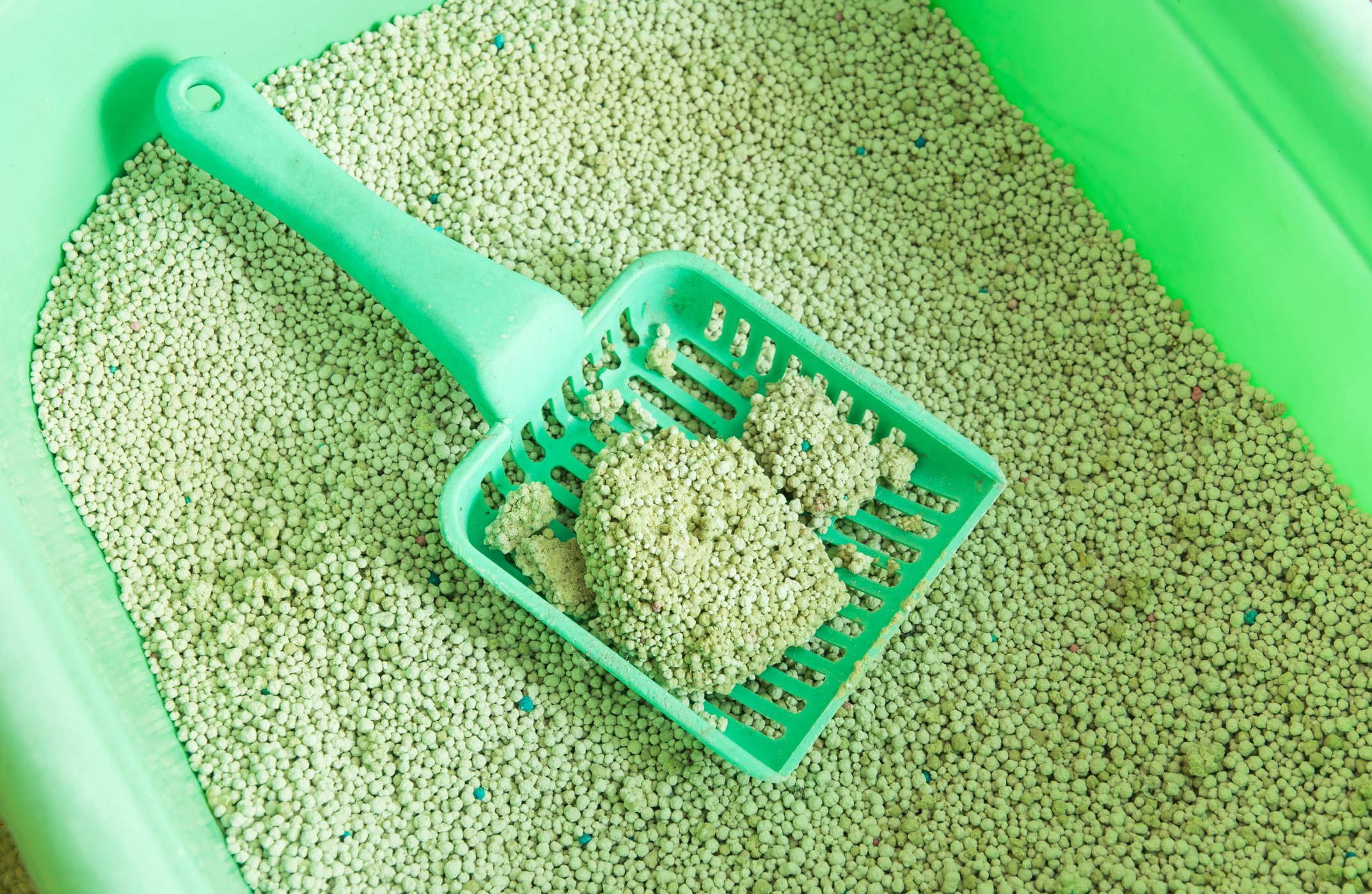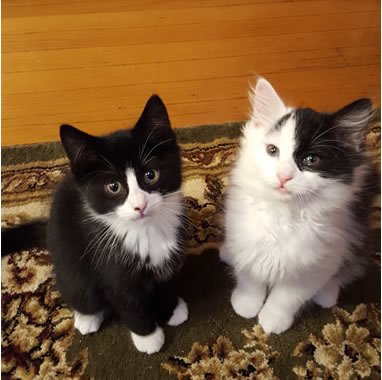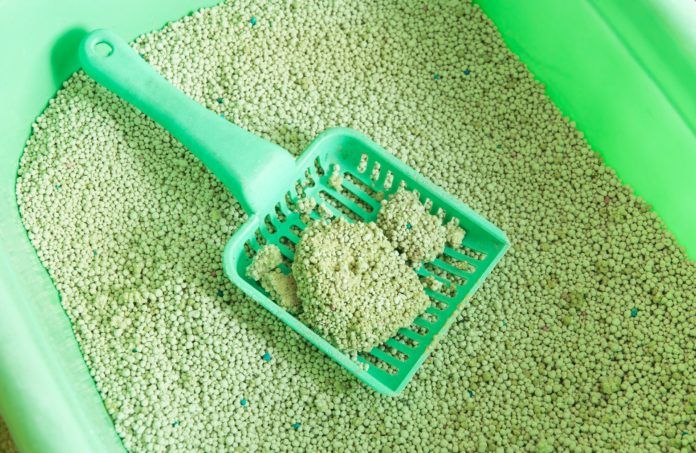© Jumnong | Dreamstime

When we invite cats to live with us in our homes, it’s our responsibility to align their basic needs as closely as possible to Mother Nature’s provisions. The natural substrate that cats use outdoors for elimination is dirt or sand.
Before the arrival of commercial cat litter in 1947, lucky indoor cats used dirt, sand, ashes or a blend of materials. The original “kitty litter” was composed of clay granules — whereas today’s market is flush with litters made from a variety of materials.
The litter market continues to grow with an overwhelming number of commercial litters available, touting various benefits marketed to the preferences of pet owners. However, the best litter on the market is the one that your cat will use. Let’s dig in and become kitty litter-ate about the different types of litter to better reach a happy compromise between feline pet parents and their cats.
Where to begin?
There are two forms of litters — clumping and non-clumping — each made from a variety of materials. Clumping (or scoopable) litter usually wins over both people and cats. It absorbs urine in tight, solid clumps, which helps to make clean up easier, and it’s available in a variety of materials and price ranges. There are also eco-friendly choices now available.
No matter which you choose, realize that they all have pros and cons, including amount of dust, tracking, odor control, cost, ease of clean up and environmental friendliness.
The many types of litter
Clumping clay. Made from bentonite, clumping clay absorbs urine into tight clumps, which can be scooped out. The amount of dust and tracking vary; it’s not biodegradable or flushable. Cats like the feel of the small granules.
Non-clumping clay. Clay granules absorb urine and adequately absorb the odor. Because of the larger granules, there’s less tracking. Solid waste can be scooped out, but because this type of clay doesn’t clump, saturated granules remain and urine tends to pool in the bottom of the box. As a result, it requires frequent, thorough cleaning and litter replacement.
Silica gel crystals. These crystals are highly absorbent, provide odor control and need replacement about once a month. As with clay, after the crystals reach their saturation level, urine pools in the bottom of the box. The crystals need stirring to help ensure absorption, and solid waste must be scooped out of the box. Some cats don’t like the crystals because it can irritate their paws. Silica crystals aren’t biodegradable or flushable.
Corn. Corn-based litter is all-natural corn kernels or cobs which absorb urine, odor and is biodegradable. The amount of dust and tracking vary. Some cats don’t like the smell of corn, and some cats and people are allergic to corn.
Wheat. Made from ground wheat, it’s chemical free, absorbent of odors and forms solid clumps when wet. Wheat litter is biodegradable, and is low in dust and tracking. However, some cats and people may be allergic to wheat.
Walnut shells. Walnut litter is made from the fibrous materials from walnuts. It absorbs urine into hard clumps, controls odor, has low dust and tracking and is biodegradable. It offers an alternative to those with corn or wheat allergies, but may not be suitable for individuals with nut allergies.
Wood. The reclaimed wood shavings and sawdust from wood have been treated to remove toxins and oils. This litter type comes in pellets, granules and finely crushed cobble, which dehydrates moisture from solid waste. The granules absorb urine (but in loose clumps) and the pellets break down into sawdust, which needs to be replaced frequently. Pine litters do control odor, but some cats and people may find its natural scent to be too strong. Wood litter is biodegradable.
Recycled paper. Made from recycled newspaper, it is available in non-clumping pellets and clumping granules. This litter is highly absorbent, varies in dust, is low tracking and is biodegradable.
Grass. Grass is the new kid on the block, but fast becoming a favorite of some pet owners. Some brands have super-fine granules that tightly clump, control odor, and there is usually low dust and tracking. Grass is biodegradable and lightweight to carry.

Points to ponder
When considering a litter, it’s important to choose one that closely matches the natural substrate, which is fine-grained, loose sand. For this reason, most cats prefer clumping litter because the small grains feel more natural and comfortable to their paws. Narrow down a few of your preferences and include your cat before making the final decision. Offer a litter cafeteria so your cat can choose the personal preference regarding form, material, texture and scent.
Around four weeks of age, kittens will instinctively scratch in sand, and nature will take its course. Clumping litter sounds ideal — but kittens younger than seven weeks old are the exception to the rule. This group is still in kindergarten and yet to learn the finer points of litter box etiquette, so they’re prone to marching through the mess or exploring litter with their mouths. Experts feel that a better choice is soft newspaper pellets or one of the many other non-clumping choices.
Avoid fragranced litters
No matter which type of litter you choose, forego the heavy fragrances, scents and deodorizers. Most cats find them offensive to their keen sense of smell and many respond by avoiding the litter box.
Regardless of the type of litter, keep the litter box clean. Scoop daily and remove solid waste as soon as you can. Add clumping litter as needed, but refill with fresh litter monthly; non-clumping litter should be replaced every couple of days. Always thoroughly wash the litter box with a gentle soap before filling with clean litter.
If your cat faithfully uses the litter box and suddenly stops, schedule a visit to your veterinarian promptly for a check-up to rule out any number of health conditions. If a clean bill of health is presented, re-evaluate the form and type of litter, number of litter boxes (experts recommend one litter box per cat plus one), the style of litter box, location and cleanliness.
Obviously, cat litter is a basic staple for indoor cats, but the sheer number of choices can overwhelm even the savviest pet parents. There is no perfect litter that fits every person and every cat. Because each litter has its advantages and disadvantages, it’s important to learn the differences to find which litter best suits your household and, most importantly, your cat. — Ramona Marek




